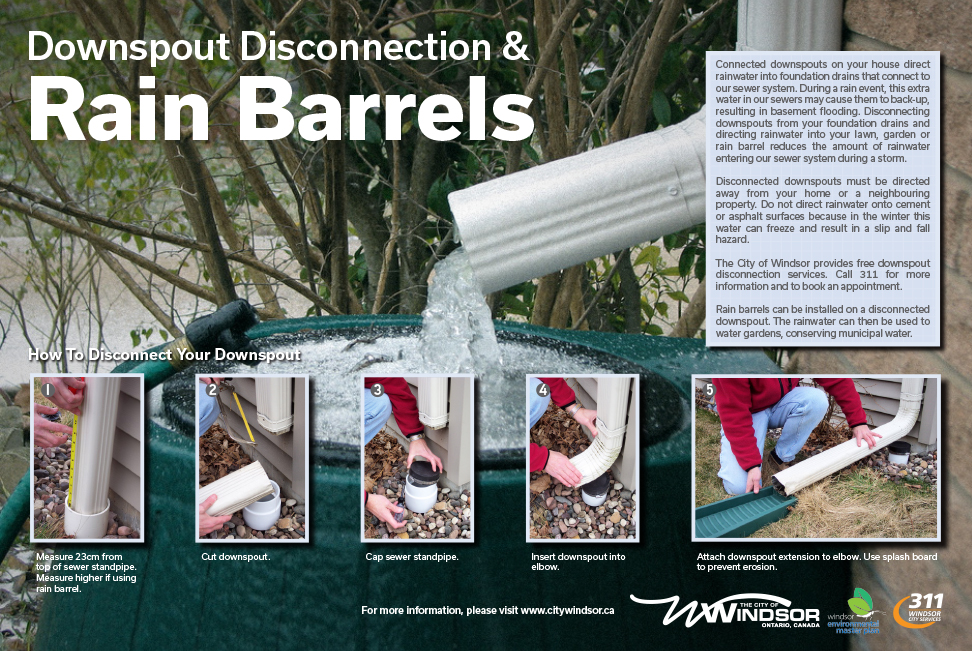Downspout Disconnection and Rain Barrels
Downspout Disconnection and Rain Barrels
In urban areas, downspouts have historically been connected to a home's foundation drain system. For most of the homes built before the 1990s, these foundation drain systems tie directly into the sanitary sewer system. Under these conditions, all rainwater falling on a roof is directed to the sanitary sewer system. The cumulative effect of thousands of connected downspouts can greatly increase the chances of the sanitary sewer system being overwhelmed by stormwater, causing sewers to surcharge. All this rainwater in the sanitary sewer greatly increases the risk of basements flooding and increases the annual number, magnitude and duration of combined sewer overflows (untreated sewage forced to bypass the City's treatment plants that send water to the Detroit River).
Downspout disconnection is the process of separating roof downspouts from the sewer system and redirecting roof runoff onto pervious surfaces, most commonly a lawn or garden. In some cases, additional work is required, as it is not recommended that disconnected downspouts direct rainwater towards hard surfaces such as sidewalks and driveways where a slip and fall situation may occur. For buildings with internal drainage, disconnecting internal downspouts may be difficult or impractical, however, this is not a common practice for residential buildings.
To make disconnecting downspouts easier, the City of Windsor provides free downspout disconnection services for Windsor residents. Call 311 for more information and to book an appointment.
As part of the retrofitting of the "Climate Resilient Home," the downspouts were disconnected and a rain barrel installed.
To learn more, view our video on the City's Downspout Disconnection Program:
Benefits of Disconnecting Downspouts:
Rainwater Volume
- Disconnecting downspouts allows for volume reductions through infiltration and evapotranspiration. The potential exists for disconnected roof runoff to be greatly reduced in sewer system.
Peak Discharge
- Connected downspouts provide a direct connection to the City's sewer system, allowing rainwater to flow fast into the system. The rainwater from a disconnected downspout should discharge onto a pervious surface, allowing infiltration. Under heavy rainfall events, the infiltration capacity of the soil may be exceeded, and under these conditions the extra rainwater may eventually flow over impervious surfaces to storm sewer catch basins or manholes. However, these flows will be delayed and reduced.
Water Quality
- Roof runoff contains deposited atmospheric pollutants, particles of roofing materials, and nutrients and BOD loadings from bird droppings. The concentration of these pollutants will be reduced as the stormwater infiltrates and is taken up into plant roots. Also, a reduction in rainwater volumes in the sewer system will reduce the number and magnitude of combined sewer overflows to the Detroit River.
Added Benefit
- Rain barrels can be installed on a disconnected downspout. This rainwater can then be used to water gardens, and thus help conserve municipal water.


